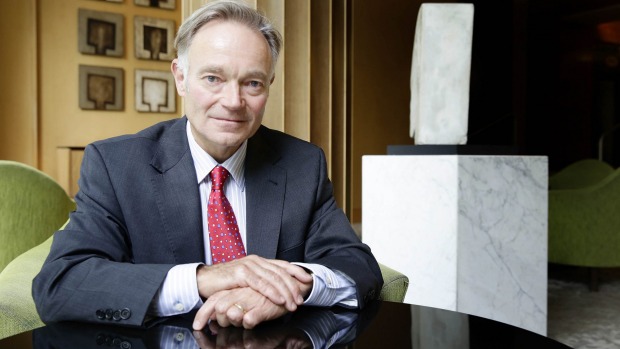
CSL’s chief scientific officer Andrew Cuthbertson. Photo: Jessica Hromas
Biotechnology giant CSL will next year push for approval of its new haemophilia drug, which has been in development for a decade and could deliver hundreds of millions in sales.
Chief scientific officer Andrew Cuthbertson said he expects drug regulators in the United States and Europe to take about a year to approve CSL’s recombinant coagulation factor IX, which is used to prevent bleeding in patients with a form of the blood-clotting disorder haemophilia.
Current treatments for haemophilia B require patients to go to hospital two to three times a week. But the new drug, also known as CSL654, can be administered weekly or fortnightly with “no breakthrough bleeds,” he said.
“That is quite life-changing for these patients,” Dr Cuthbertson said.
CSL is “poised to file the dossier with all the clinical data” to regulators, he said, adding a product launch could take place in late 2015 or early 2016.
The current market for treatment of haemophilia B is worth about $500 million, he said.
Dr Cuthbertson, who is one of CSL’s most senior Australian-based executives and a strong supporter of the proposed medical research future fund, said regulatory applications for CSL654 would be a highlight of the company’s research and development agenda in 2015. He gave a briefing to analysts in Sydney on Wednesday, outlining how CSL would spend almost $US500 million ($595 million) on R&D over the year.
Investors responded positively to the update. CSL shares climbed 1.6 per cent to a 12-month high of $86 on Wednesday. The stock has gained 25 per cent in the past year.
The $40 billion blood product and vaccine maker has 13 different therapies in clinical trials. The company has at least eight other candidates in pre-clinical research. Its R&D expenditure also includes regulatory applications, as well as trials that may expand the use of therapies into new diseases or into new geographical markets.
In the next 12 months the company hopes to launch two new products in European markets: emphysema drug Zemaira and Voncento, another haemophilia drug which is also used in surgery to stop bleeding in patients with a certain inherited disorder.
CSL spends about 8 to 9 per cent of its revenue on R&D annually. In 2013-14 its investments hit $US466 million and just over half of that was dedicated to new product development, Dr Cuthbertson said.
The development of CSL654 over the past decade is a good example of CSL’s global collaborative approach, he said. The original research was primarily done in Marburg, Germany before Australian scientists developed a cell-line from which the genetically engineered protein was created. Finally CSL’s United States-based teams ran the clinical trials.
CSL’s other priority project for 2015 is a phase 2b trial of a drug the company hopes to show can prevent heart attack and strokes in patients who have already had one cardiac arrest. Its drug CSL112, which is made from human plasma that CSL would otherwise discard, mimics the function of high-density lipoprotein (HDL) – known in medical circles as “good cholesterol”.
The company will recruit 1200 patients for the study, which may take more than two years to complete.
Citi analyst Alex Smith recently argued that despite the great potential of what he has termed “the cholesterol killer”, progress on CSL112 has been “disappointingly slow”. At the same R&D briefing two years ago, CSL said a phase 2b trial would begin in 2013, he said in a note to clients.
Dr Cuthbertson conceded there had been some setbacks along the way as CSL negotiated with regulators over the design of the trial, especially around bringing patients through to the third trial.
However, he said it was crucial the study was faultles as it was a completely novel drug. “We don’t want to be sent back to do it again,” he said.
